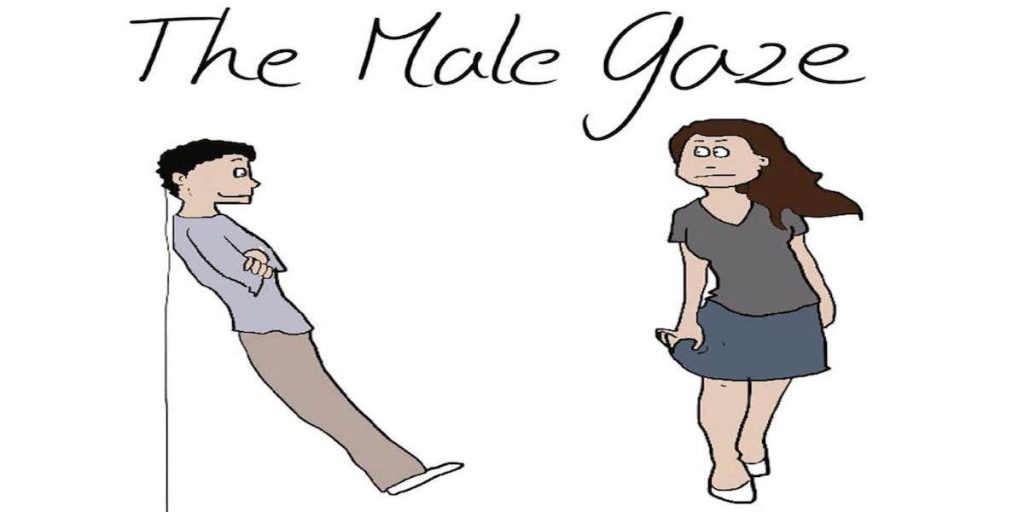The male gaze is a notion that is used in feminist theory to describe the depiction of women in visual art and literature from the perspective of heterosexual men. This depiction portrays women as objects of sexual desire for male viewers. This gaze manifests itself in film in three perspectives:the perspective of the male director, the perspective of the male character in the movie, and the perspective of the male audience.Laura Mulvey uses the concept of the gaze to criticize the image of women in film, starting with John Berger’s Ways of Seeing, which criticizes the representation of women in art and advertising. This gave rise to the term “male gaze”. Historically, the gaze has sexualized and fetishized black female nudity, while marginalizing them. So, essentially, the male gaze highlights how the media objectifies and sexualizes women, perpetuating gender stereotypes and unequal power dynamics.(Bell, Vicki ,2017)

Women are a major focus of the masculine gaze in media and popular culture. Women are commonly portrayed by men in ads, movies, TV, and fashion as attractive rather than intelligent or talented. On the July 25th Shanghai Comic Con show floor, a cosplayer in a JK outfit was photographed by another female who openly accused her of posing indecently and degrading the JK scene. After the story went viral on social media, some called the girls whores, while others thought the cosplayer was creating a sensual atmosphere. According to art critic John Berger, women’s public grooming and self-expression are not their responsibility. Should women wear makeup out? Dressed, how should they walk, sit, or stand? How wide should I open my neckline to avoid odd looks? Berger believed that girls had to care about these concerns because seeing and being looked at is a power relationship, and men have always had the upper hand. It influences our attire, manner, and speech constantly via ads, pop culture, parental and teacher lectures, public space restrictions, and even our personal expectations. The JK outfit may look like a girl fight, but the male gaze is present.
Finally, addressing the male gaze can be done through media literacy,; such as educating yourself and others about the male gaze and its presence in all forms of media; advocating for change:support campaigns and initiatives that call for more inclusive and fair media coverage; media production:if you work in the media or have the opportunity to influence media content, actively promote diversity and respect for women. Raising awareness can be accomplished by having conversations with friends, family, and coworkers regarding the male gaze and the influence it has on society, encouraging others to examine and criticize negative media representations, and other practices.
Reference list:
Vicki,B (2017). “How John Berger Changed Our Ways of Seeing Art”. The Independent. Available at:


I liked the points you made in your blog. I found the phrase “men have always had the upper hand” striking. Unfortunately, the male gaze permeates many aspects of women’s daily lives, so much so that we have internalized it. Your blog reminded me of a Margaret Atwood quote from ‘The Robber Bride’: “Even pretending you aren’t catering to male fantasies is a male fantasy: pretending you’re unseen, pretending you have a life of your own, that you can wash your feet and comb your hair unconscious of the ever-present watcher peering through the keyhole, peering through the keyhole in your own head, if nowhere else. You are a woman with a man inside watching a woman. You are your own voyeur.”
I really enjoyed your blog. Your blog explains the male gaze specifically and uses a lot of literature resources to give me a better understanding of the male gaze.